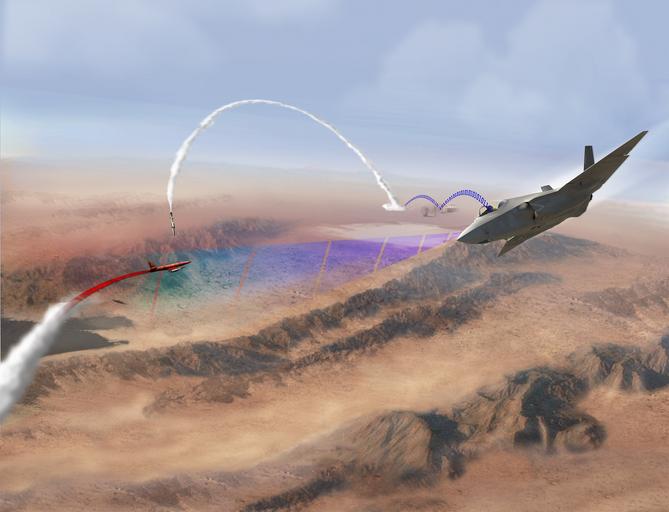MAKE A MEME
View Large Image

| View Original: | 160912-N-N0101-313.jpg (2200x1684) | |||
| Download: | Original | Medium | Small | Thumb |
| Courtesy of: | www.flickr.com | More Like This | ||
| Keywords: f-35 f35 f-35b f35b naval integrated fire control-counter air navalintegratedfirecontrolcounterair nifc-ca nifcca white sands missile range whitesandsmissilerange uss desert ship (lls 1) ussdesertshiplls1 washington dc usa outdoor 160912-N-N0101-313 WASHINGTON, D.C. (Sept. 13, 2016) This graphic illustration depicts the U.S. Navy’s first live fire demonstration to successfully test the integration of F-35 with existing Naval Integrated Fire Control-Counter Air (NIFC-CA) architecture. During the test at White Sands Missile Range, New Mexico, Sept. 12, an unmodified U.S. Marine Corps F-35B acted as an elevated sensor to detect an over-the-horizon threat. The aircraft then sent data through its Multi-Function Advanced Data Link to a ground station connected to USS Desert Ship (LLS 1), a land-based launch facility designed to simulate a ship at sea. Using the latest Aegis Weapon System Baseline 9.C1 and a Standard Missile 6, the system successfully detected and engaged the target. (U.S. Navy graphic illustration courtesy of Lockheed Martin/Released) 160912-N-N0101-313 WASHINGTON, D.C. (Sept. 13, 2016) This graphic illustration depicts the U.S. Navy’s first live fire demonstration to successfully test the integration of F-35 with existing Naval Integrated Fire Control-Counter Air (NIFC-CA) architecture. During the test at White Sands Missile Range, New Mexico, Sept. 12, an unmodified U.S. Marine Corps F-35B acted as an elevated sensor to detect an over-the-horizon threat. The aircraft then sent data through its Multi-Function Advanced Data Link to a ground station connected to USS Desert Ship (LLS 1), a land-based launch facility designed to simulate a ship at sea. Using the latest Aegis Weapon System Baseline 9.C1 and a Standard Missile 6, the system successfully detected and engaged the target. (U.S. Navy graphic illustration courtesy of Lockheed Martin/Released) | ||||